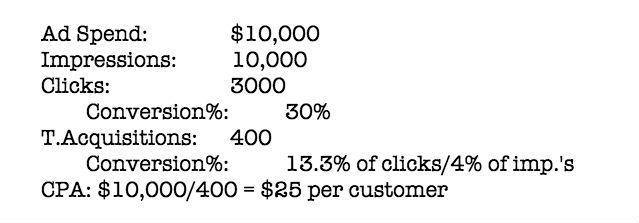For the modern web, money isn’t the only driver in town, nor is it the primary metric being tracked. For years now, high-traffic sites have been dealing in information; tracking it, using it, and even selling it. With information becoming the newest form of currency, the gap between successful and uber-successful companies is growing by the day.
Instead of playing catchup, it should be a priority to know where you stand in relation to competitors, and to have an awareness about what you need to increase and decrease.
Customer Relationships
Back in Chapter 1, we talked about the importance of maintaining relationships with customers. There are a variety of ways to do this, but the asset you can reference at the end of your customer interactions often takes the form of some kind of customer list or database. This roster of names provides the access your company needs for repeat communication. Keeping that philosophy in mind will allow us to properly frame the rest of this chapter.
The 5 W’s
In journalism, they talk about the 5 W’s incessantly: who, what, when, where, and why. Designing an optimized corporate website is no different, because knowing the answers to these questions gives you a readable roadmap, explaining what you are doing right, what is going wrong, and what changes need to be made.
Good journalists even ask an additional question: how. If you can answer the “how” question, you have begun to understand the context for why your audience is behaving the way that they do, and whether different conditions will affect that.
After it all boils down, what business wouldn’t want to know why their last campaign was successful, who was buying, what they were purchasing, exactly when they made their purchase, and where they were when they were doing it? While most of these questions might be better left for your marketing team, it pays to have everyone on-board with the most important pieces of your campaign goals.
Business Logic
Marketing can get pretty complicated when you’re in the trenches, but from the outside looking in, it’s really based on a simple schema: get attention, create desire, provoke action, repeat. Let’s explore that caveman outline in more detail.
There are really only a few metrics everyone on your website team should be aware of: Cost per acquisition (CPA), ad cost, conversion percent, total acquisitions, and lifetime customer value (LCV). For our purposes, if we focus on anything more than that, we’ve inlet too much information for our needs.
Imagine the case of a bakery that is launching a campaign to promote their new weight-loss doughnuts. They are claiming that their brand of hole-less doughnuts will slim you down, and tone you up like no sweet pastries have ever done in the history of the world; bold claims.
Contrary to their bold claims, they do have a practical marketing team that has decided to wean off of direct mail, in favor of an increase in content marketing and social media ads. Here’s why:
Direct Mail Metrics
With CPA equal to Ad Spend/Total Acquisitions, they have come in with a CPA of $40. It didn’t take their marketing team long to think twice about how many doughnuts they would have to sell just to cover their initial cost of acquiring the sale. Even if the LCV for this bakery is $500, they might be able to better compete with future competition by lowering their CPA.
Here’s what their digital campaign might look like:
Digital Ads

Disregarding how many impressions your ad vendor said you were served, and focusing solely on your ad spend relative to your Total Acquisitions/Sales, their new marketing route outperformed their direct mail campaign. Additionally, the bakery succeeded in lowering their CPA in relation to their LCV number, which may allow them to compete with new competitors for years to come.
Tracking, Design, and Testing
As most experienced digital marketers will tell you,
Test, test, and test some more..
The common denominator when it comes to cornering your CPA, is tracking and testing. Without having a handle on the numbers behind your campaigns, the value of the website to your company will be hard to gauge. Most marketing teams use Google Analytics, Omniture, or a similar platform to closely monitor these numbers. Where measurement comes into play on the design end, is in the front-facing elements which lead to changes in user behavior.
Using a combination of heat maps, surveys, and dynamic feedback from your users becomes crucial in the constant re-evaluation of certain website features.
There is no substitute for the data that comes from experimentation. Oftentimes, counterintuitive changes result in unexpected results. You may find that a landing page with a white background converts better than one with a dark background.
Sometimes slick designs from respected graphic designers converts poorly, while quickly-designed forms attract more signups. If you follow a philosophy of beating the control group, then the exact changes you make to your corporate site becomes less important than finishing with the optimal result.
Takeaways
Instead of stressing specific designs, forms, and landing pages, we emphasize following a philosophy that naturally leads to the changes that pertain to your corporate goals. Whether you have a corporate website presence that relies on e-commerce, generating leads for backend sales, or a complex site built on business logic and pipelines, improving on your Cost per Acquisition is likely a main component. While there are countless ways to accomplish these goals, only a handful of them will work for your business, and experimentation is the key to unlocking them.
Once your team has a beat on the core metrics of your website, you can continue to upgrade the customer experience with improved designs, interfaces, site architecture, and most importantly – customer service.